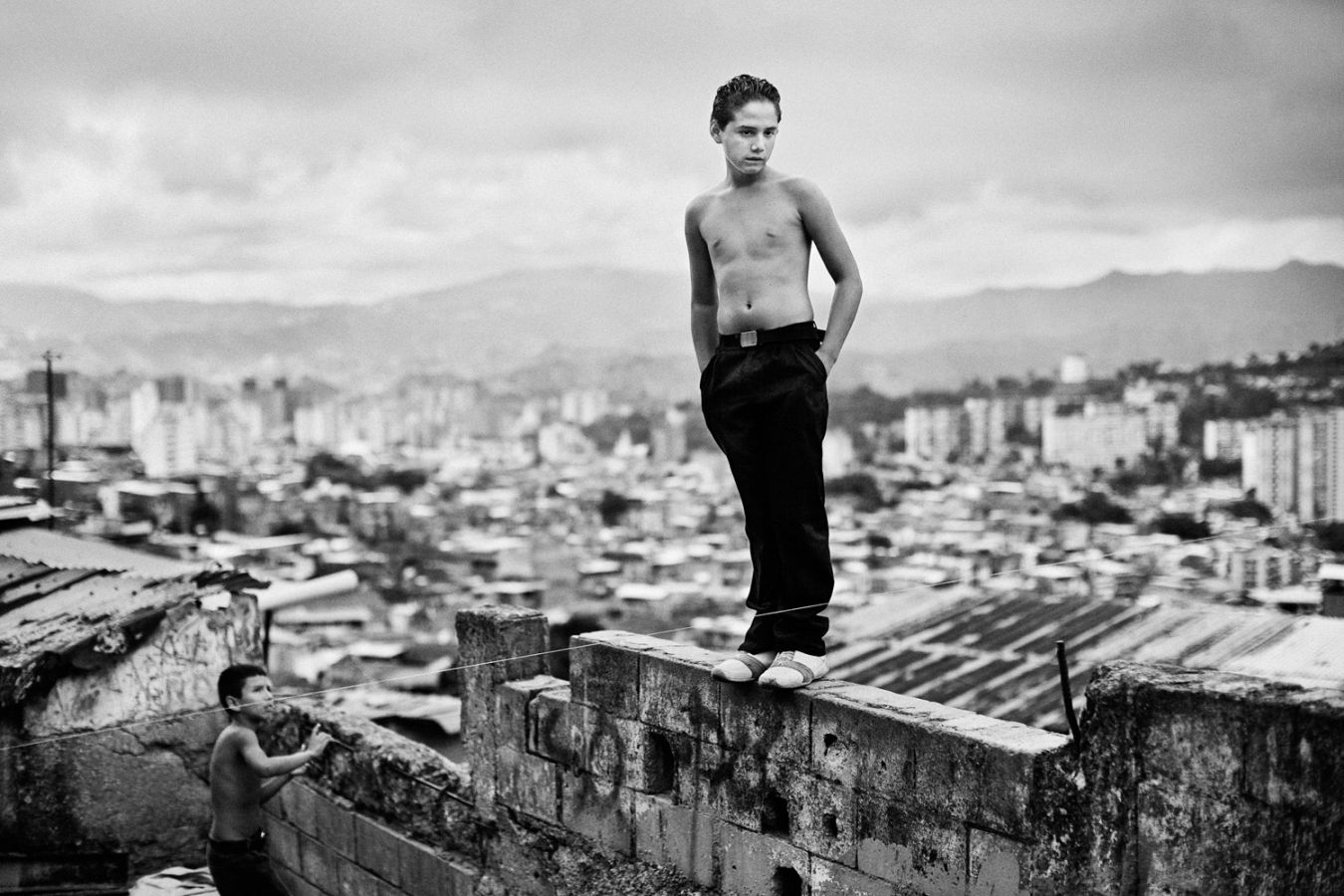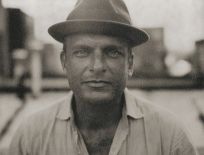Could you tell us about the two pictures here? In what context were they taken? These pictures were taken in Caracas, Venezuela as part of my book
Capitolio.
Capitolio is a book about Venezuela I published in 2009. It is sort of a reflection on a particular experience during the dark nights of "revolution".
What "capitolio" refers to?The word capitolio refers to the domed building that houses a government. Here, the city of Caracas, Venezuela, is itself a metaphorical capitolio building. The decaying Modernist architecture, with a jungle growing through the cracks, becomes the walls of this building, and the violent streets become the corridors where the human drama play itself out in what President Hugo Chavez called a "revolution".
When did you first photograph in Venezuela? I began photographing in Venezuela in 2004, and for a series of reasons got caught up in the place. I was making very intuitive images that did little to explain anything, but seemed loaded with emotion. Very early on, I had an idea for a film that I tried to make into a printed book in which an image completes the image that came before, and is fulfilled by the image that follows... like a film reel. It was an experiment of sorts to try and break the sacredness of the single image.
When and how did you start to photograph? Photography has been a part of my life since a very early age. I never imagined that there was such a profession as photographer until I was already making a living from photography. That was around 1993, so I guess that I could say that I "started" to photograph seriously in 1993.
My roots are definitely in the documentary tradition. In the beginning, I found myself in war zones around the world. I was often called a "war photographer"...a title I reject. I came to realize that I was perhaps trying to explain the world to myself rather than trying to "tell" a story in the traditional journalistic sense. My work has become increasingly subjective, ambiguous and personal.
What do you like about black and white photography? I consider myself a colour photographer. Black and white was a particular choice for this body of work, because of something I was trying to achieve in the concept of the book I was making. I was experimenting with how to create cinema in a book. Colour has too much information and stops the continual forward movement in a book form. The idea was to create a sort of film reel that felt like stills pulled from a motion picture. The subject, Venezuela, also simply has too much colour. It is distracting.
How has the profession of photo reporter changed since you started? Documentary photography has certainly been changed by technology and the changes in the market. That’s the boring part. The more intriguing change has to do with the notions of subjectivity and objectivity. We are all much more aware that a photograph is by its very nature subjective... and therefore not "factual". But that does not mean that it’s not true, quite the opposite. But that truth is a subjective truth.
Limited edition, numbered and signed.

 Christopher Anderson was born in Canada and grew up in West Texas. A member of the renowned agency, Magnum Photos, he first gained recognition for his pictures in 1999 when he boarded a handmade, wooden boat with Haitian refugees trying to sail to America. The boat, named the Believe In God, sank in the Caribbean. The images from that journey would receive the Robert Capa Gold Medal, one of photojournalism's highest honours. They would also mark the emergence of an emotionally charged style that he refers to as "experiential documentary" and has come to characterize his work since. He has served as a contract photographer for Newsweek and National Geographic Magazine photographing regions at war for much of the last decade. In recent years, his work has become intensely personal with his latest body of work entitled SON.
Christopher Anderson was born in Canada and grew up in West Texas. A member of the renowned agency, Magnum Photos, he first gained recognition for his pictures in 1999 when he boarded a handmade, wooden boat with Haitian refugees trying to sail to America. The boat, named the Believe In God, sank in the Caribbean. The images from that journey would receive the Robert Capa Gold Medal, one of photojournalism's highest honours. They would also mark the emergence of an emotionally charged style that he refers to as "experiential documentary" and has come to characterize his work since. He has served as a contract photographer for Newsweek and National Geographic Magazine photographing regions at war for much of the last decade. In recent years, his work has become intensely personal with his latest body of work entitled SON. 